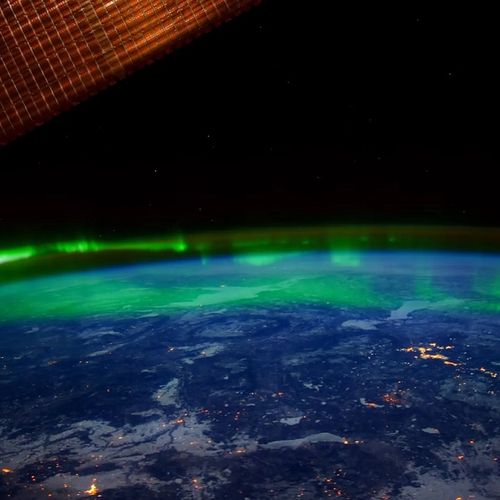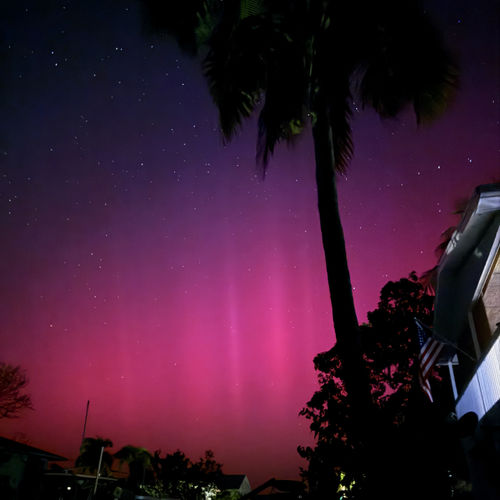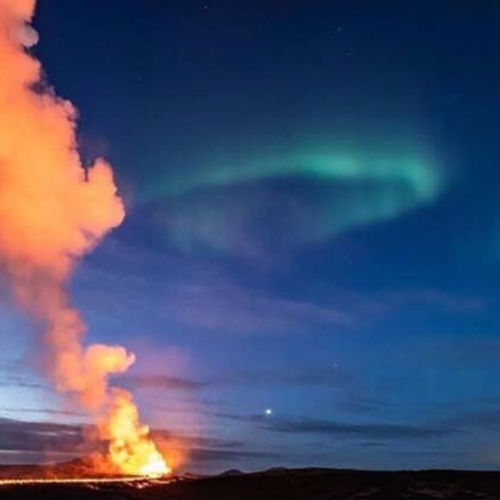
| Added | Mon, 23/04/2018 |
| Источники | |
| Дата публикации | Sun, 22/04/2018
|
| Версии |
19 APR interplanetary shock wave struck Earth's magnetic field. The flux density of the solar wind by the planet increased 4 times, while in the magnetic field of the Earth formed a fissure. The result was a geomagnetic storm of G2 class, which, in turn, has led to an "electrically blue" polar auroras.
Pilot Matt Miller said that flies airplanes for 20 years, 10 of which takes pictures of the Aurora, but of a radiance he had not seen before. This incredible shot he made with a height of 11.9 km. Aurora electric blue lit up the sky during a night flight from Edmonton to Toronto at around 4 a.m. over the Northern part of the canadian province of Manitoba. Miller managed to take some pictures using a mobile phone.
Polar lights usually glow green — a sign of oxygen. Rare blue auroras are associated with molecules of nitrogen. Energy particles striking nitrogen molecules in the upper atmosphere of the Earth, can cause a blue glow during intense geomagnetic storms.
During the storm, Northern lights spilled across the sky across the canadian border to southern Indiana (USA). Student at Purdue University Junmin Zheng saw the blue glow is just 8 miles from his dormitory. He said he began to prepare for bed on the night of 20 April when I read the news about the interplanetary shock wave. Zheng immediately went to the North to admire the flashes of heaven. Weak green glow appeared at 2 a.m. and disappeared, but shortly after 5 am, there was a sudden splash. Purple pillars were easily visible to the naked eye.
What is the interplanetary shock wave? This is the region of interplanetary space where there is a sharp change of all parameters of the solar wind and the interplanetary magnetic field. Supersonic disturbance occurs in the gaseous material in the solar wind. These waves are usually "delivered" from coronal mass ejections. In an alternative version it is possible to consider the interaction of the joint rotations (carotenaemia interaction region) (CIR). CIR is the transitional zone between slow and fast moving solar wind streams.
Translated by «Yandex.Translator»
Новости со схожими версиями
Log in or register to post comments












